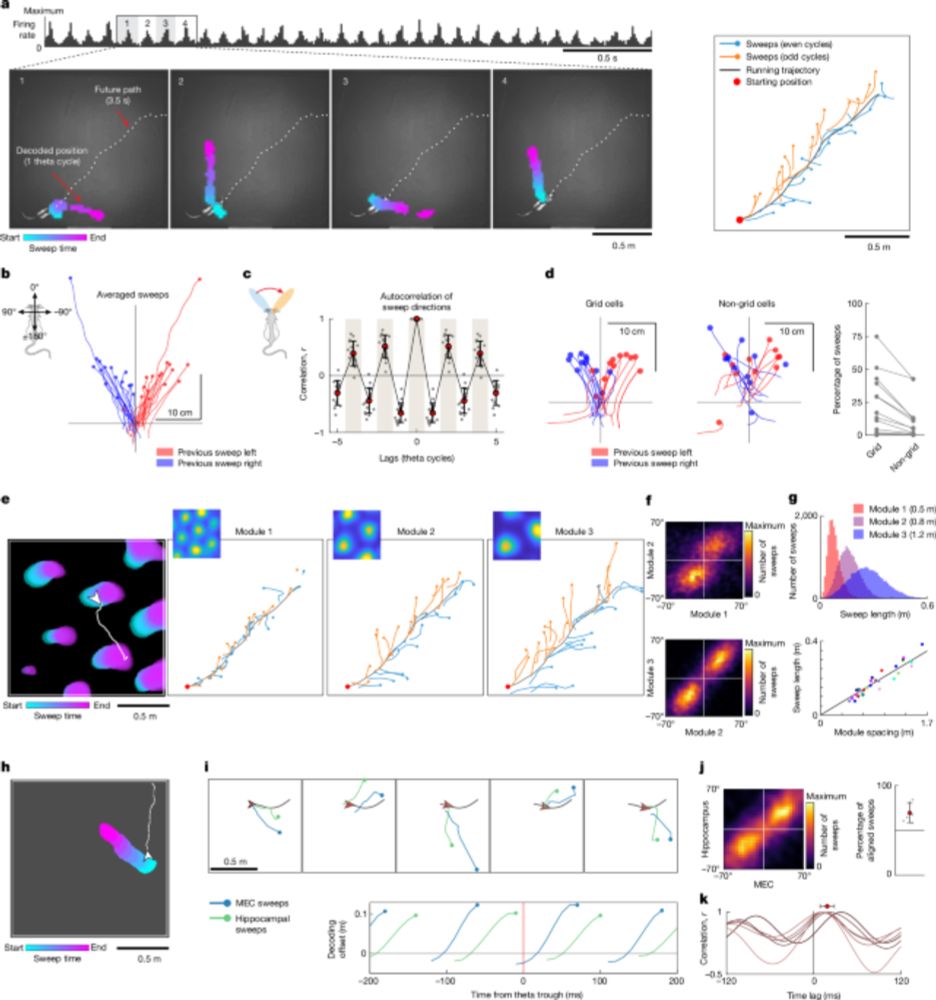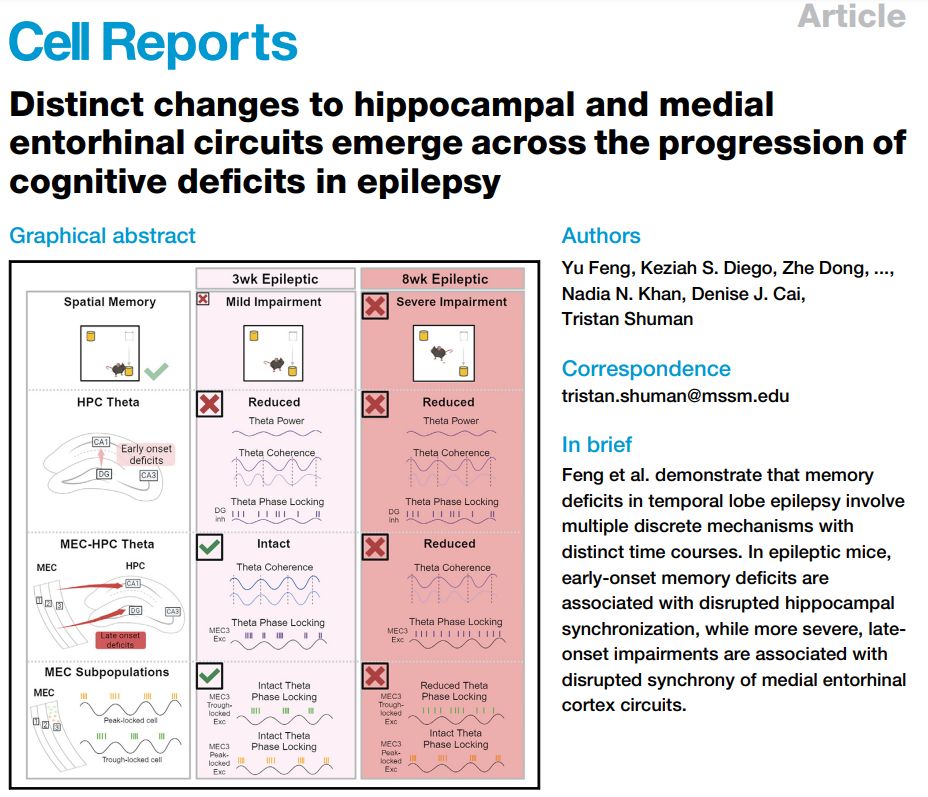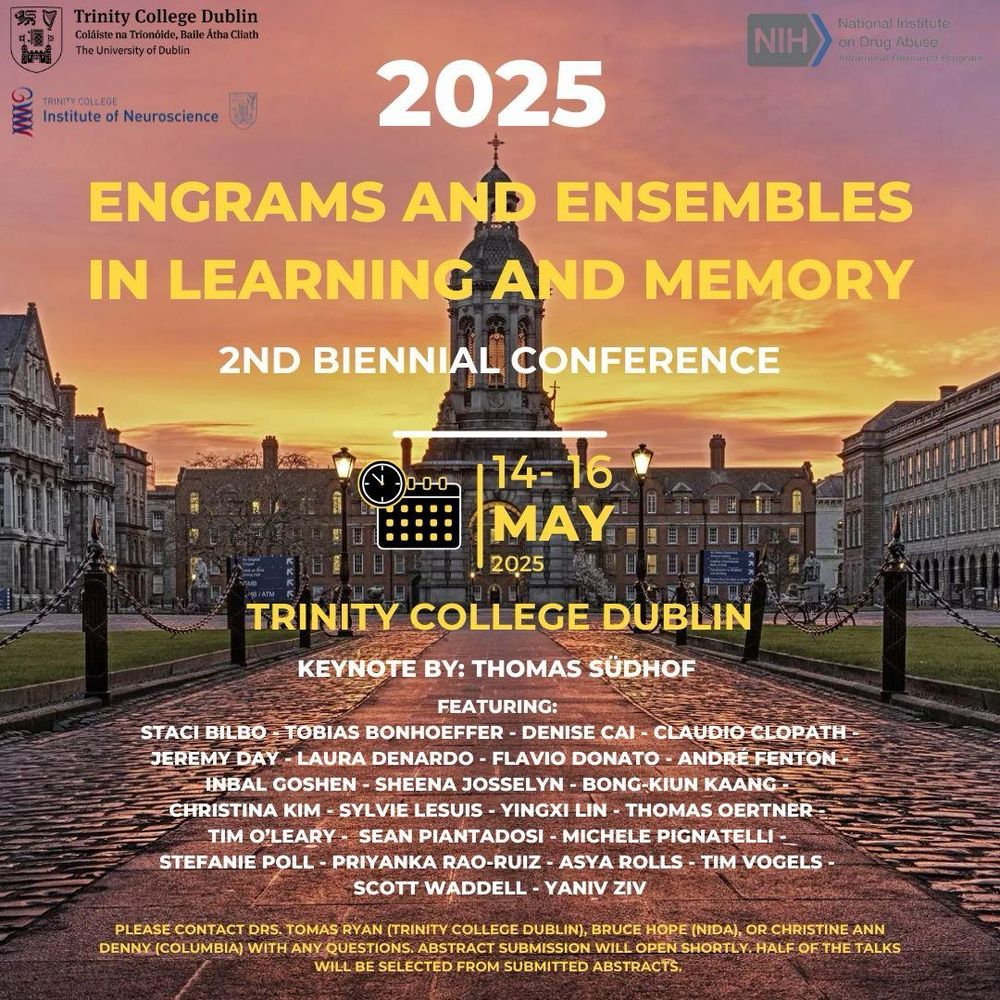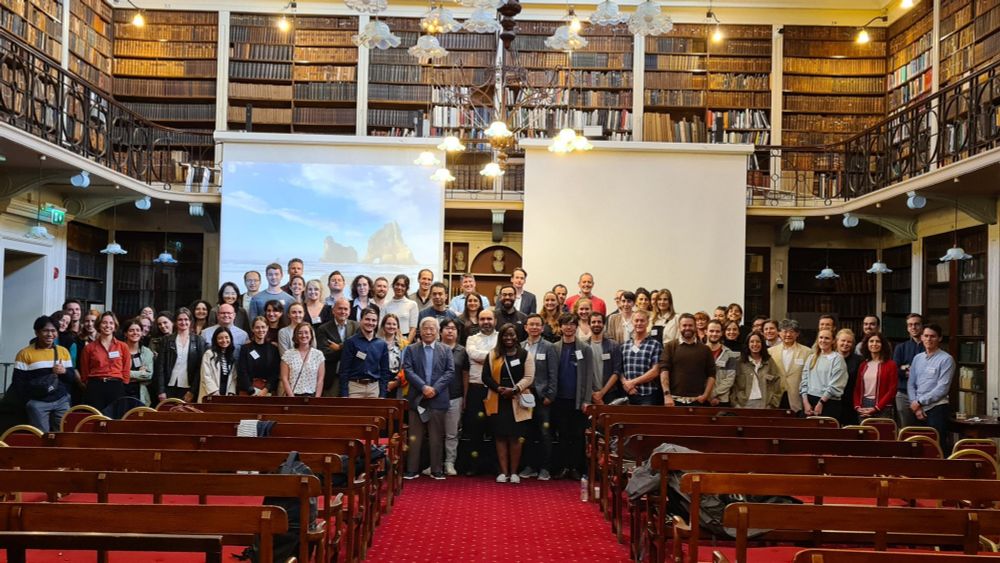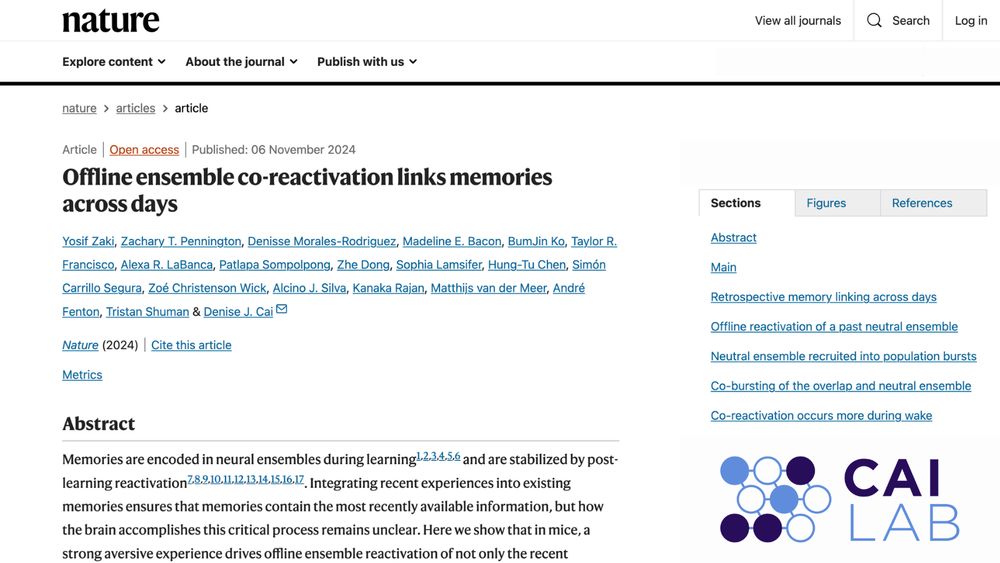Tristan Shuman
@tristanshuman.bsky.social
1.6K followers
910 following
20 posts
Neuroscientist studying memory, epilepsy, and Alzheimer’s disease.
Associate Professor at Icahn School of Medicine at Mount Sinai
Posts
Media
Videos
Starter Packs
Pinned
Reposted by Tristan Shuman
Reposted by Tristan Shuman
Reposted by Tristan Shuman
Reposted by Tristan Shuman
Reposted by Tristan Shuman
Nanthia Suthana
@suthanalab.bsky.social
· Mar 10
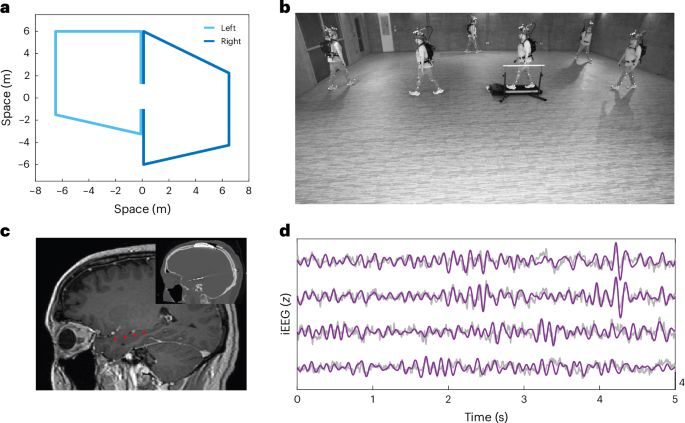
Human neural dynamics of real-world and imagined navigation - Nature Human Behaviour
Seeber et al. studied brain recordings from implanted electrodes in freely moving humans. Neural dynamics encoded actual and imagined routes similarly, demonstrating parallels between navigational, im...
www.nature.com
Tristan Shuman
@tristanshuman.bsky.social
· Jan 28
Reposted by Tristan Shuman
Tristan Shuman
@tristanshuman.bsky.social
· Jan 22
Reposted by Tristan Shuman
Reposted by Tristan Shuman
Reposted by Tristan Shuman
Tristan Shuman
@tristanshuman.bsky.social
· Nov 21
Reposted by Tristan Shuman
Jeremy Berg
@jeremymberg.bsky.social
· Nov 20
Reposted by Tristan Shuman




